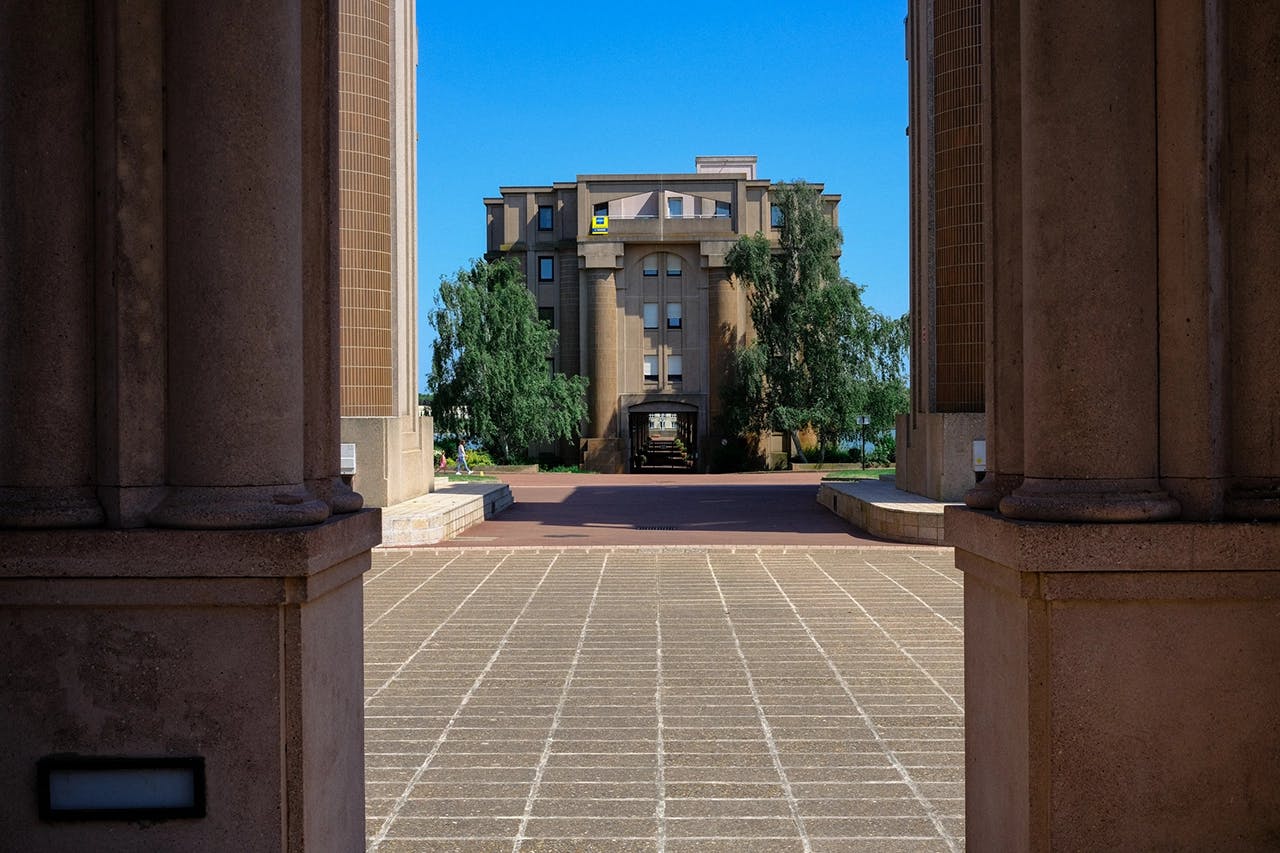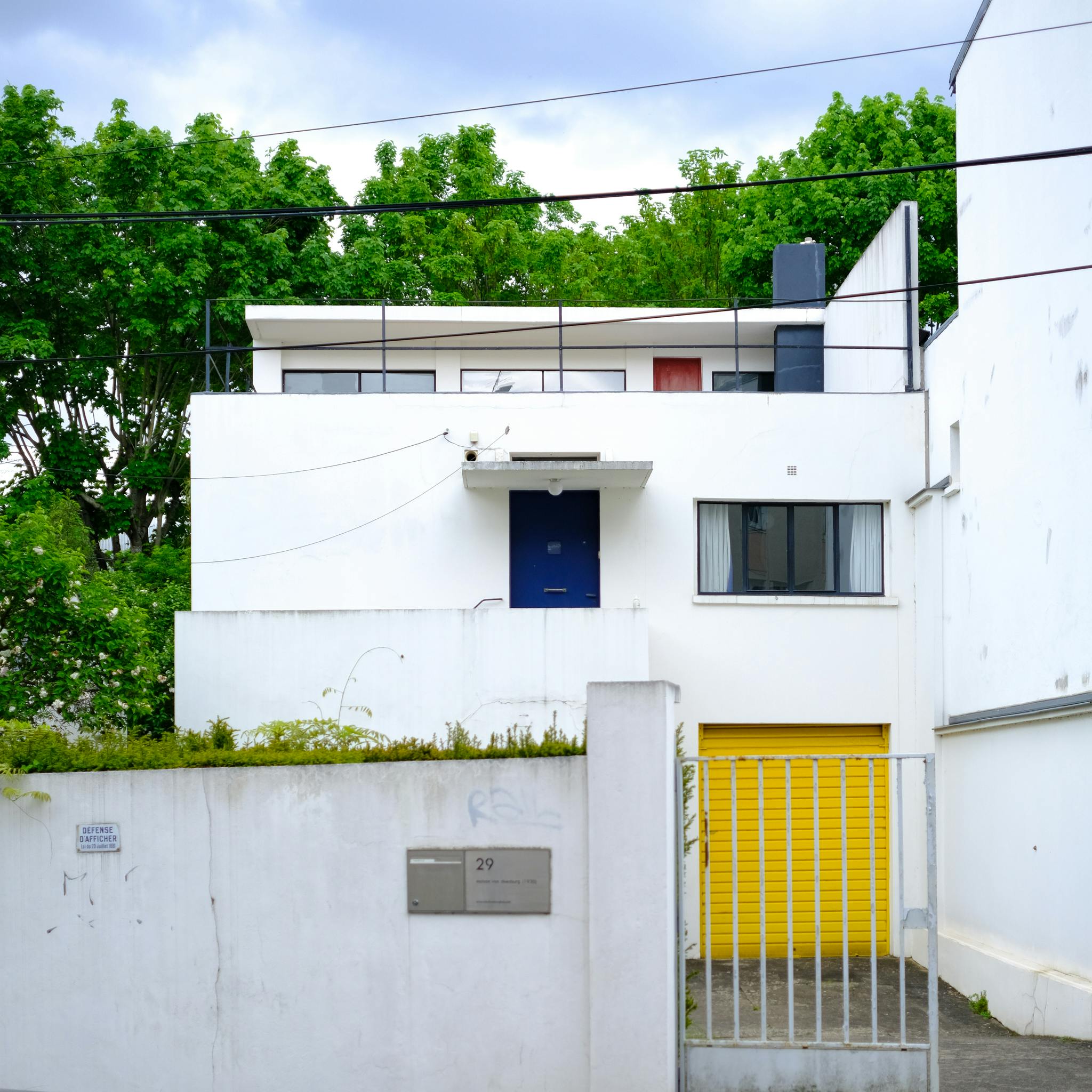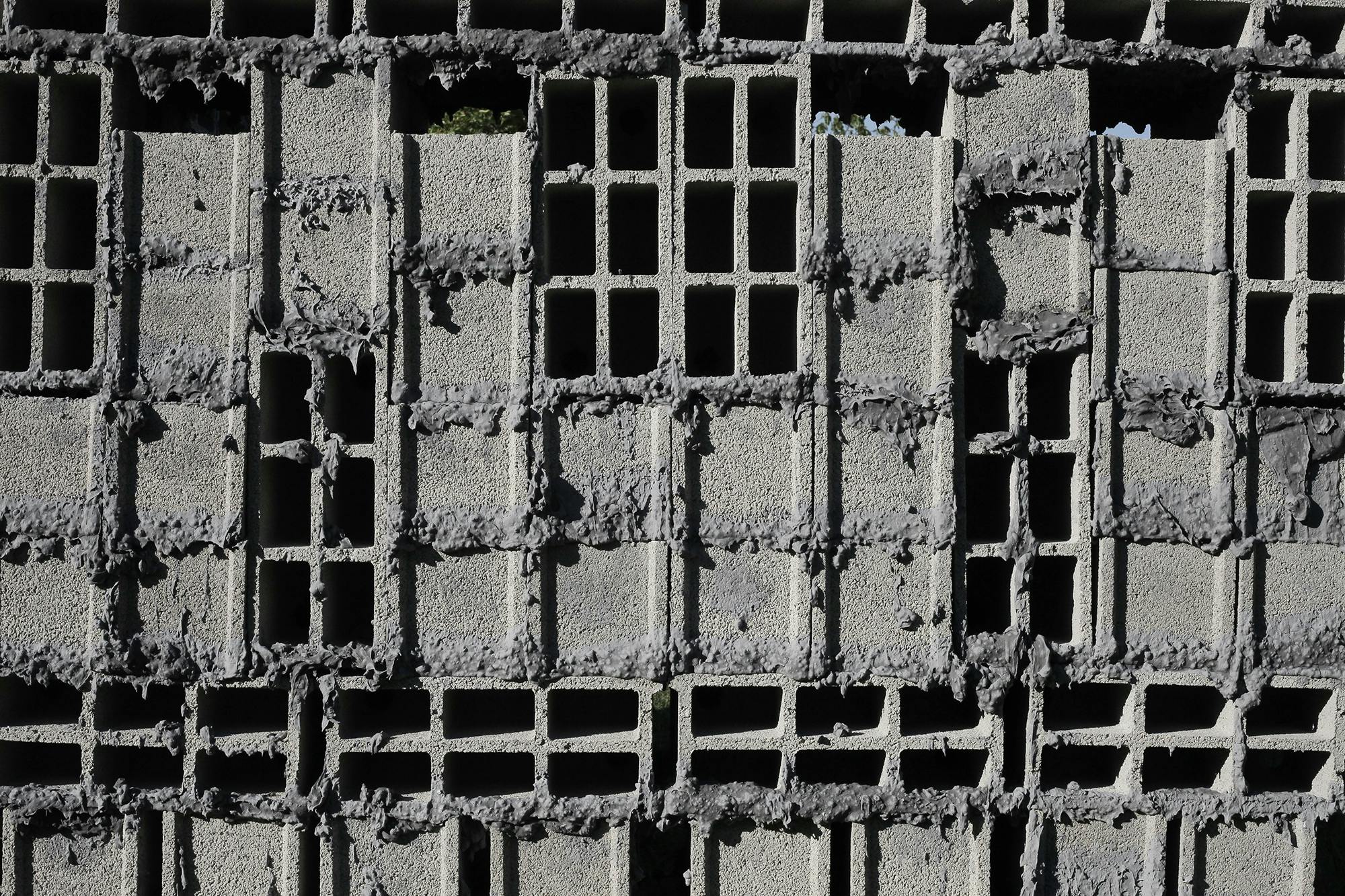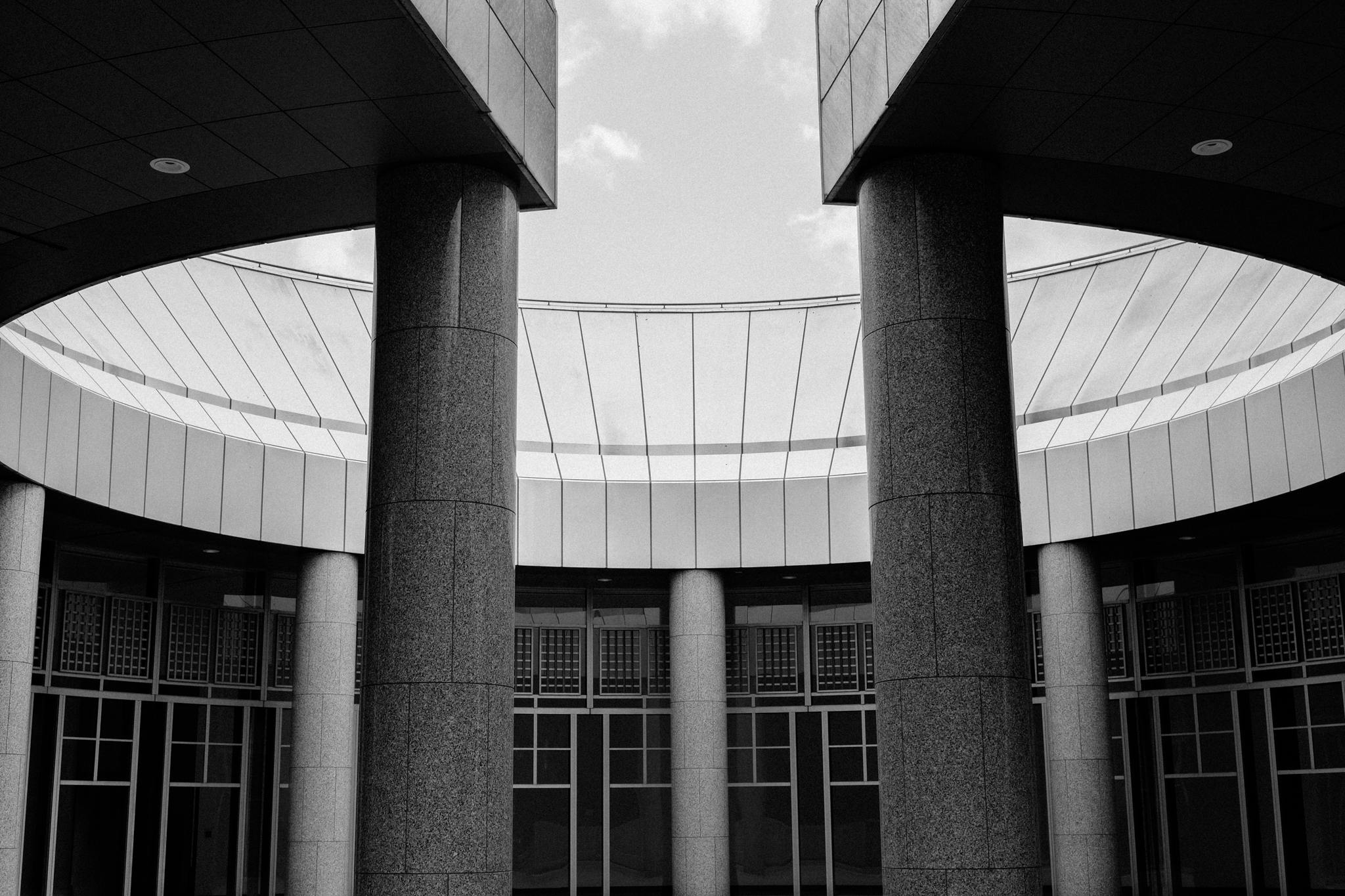
Les Arcades du Lac
Venture forty-five minutes from Paris' city centre to the banlieue, and you will arrive at one of these many social housing complexes with utopian ideals built into their design. Les Arcades du Lac, built in 1981 by Spanish architect Ricardo Bofill hosts what now seems like a dystopian Neo-Roman village from the imagination of someone from the 80's idea of the future.
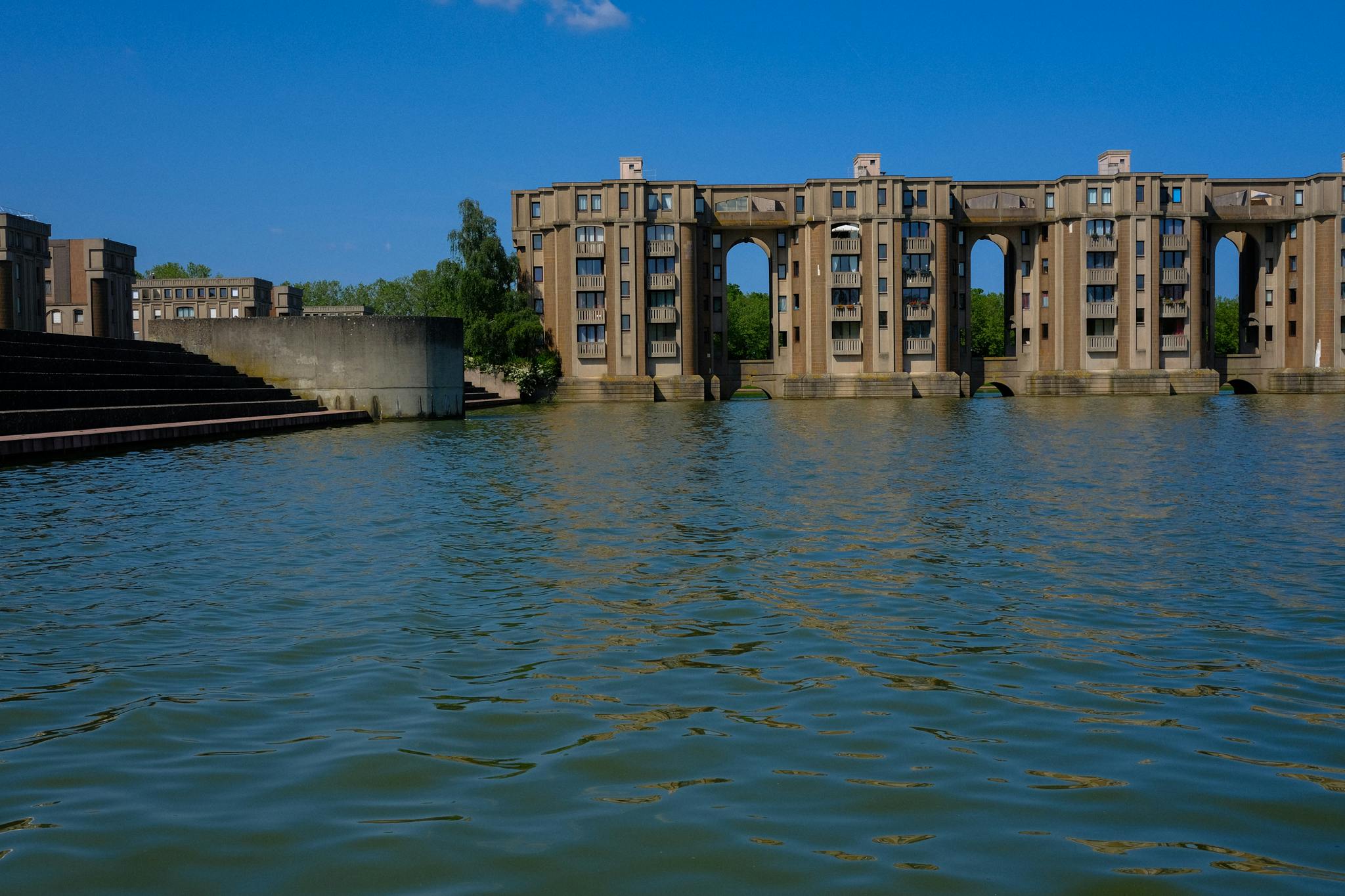
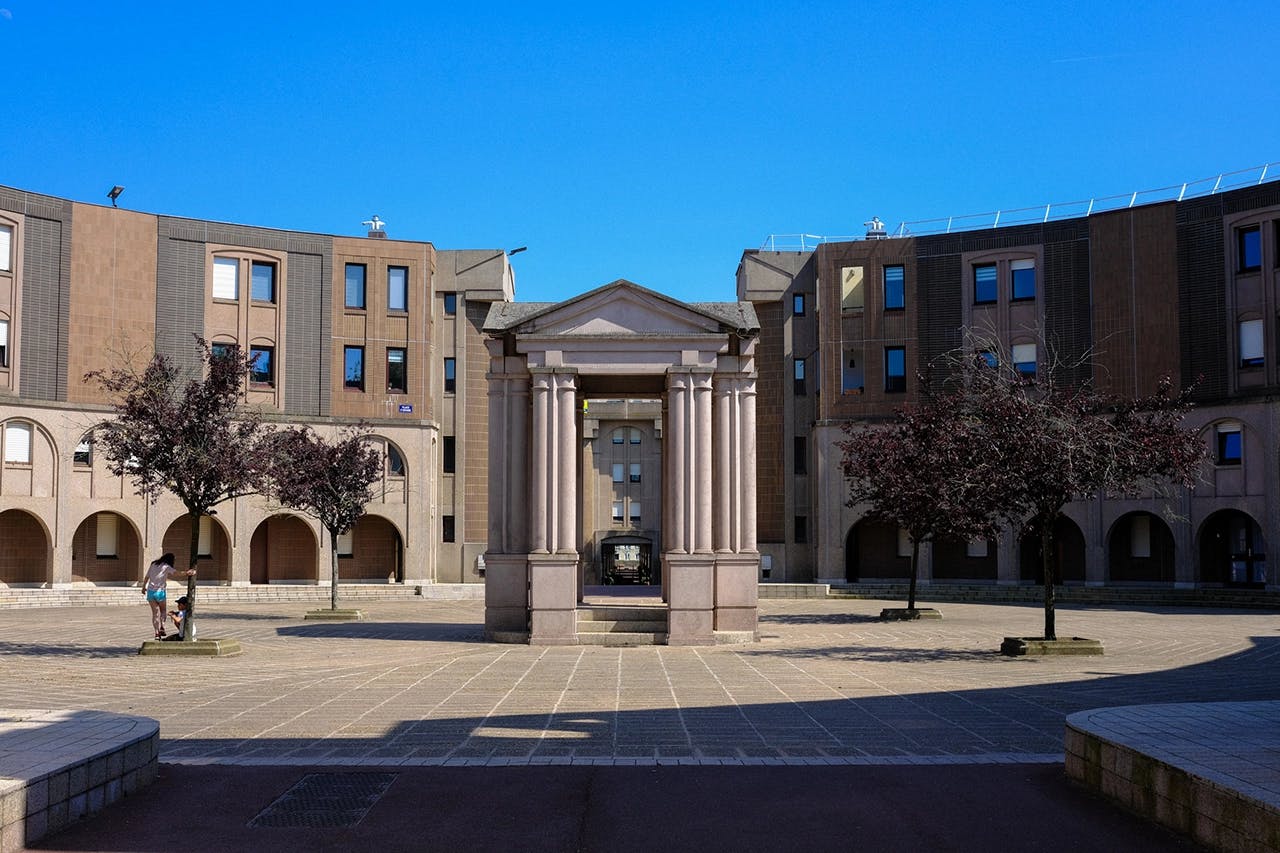
From Le Corbusier to Ricardo Bofill, Oscar Niemeyer, Manuel Núñez Yanowsky – what all of these men have in common is that the French government had commissioned them to design Social Housing Complexes (and or in Niemeyer's case offered to do a building pro-bono for the people: PCF) in or around the country's capital of Paris.
For an American, in a country where Social Housing barely exists and that which does – 'the projects' are notoriously dangerous, most likely in part due to poor architectural planning, neglect by the government and lack of consideration for its residents: the idea that a country would invite such architectural visionaries to design social housing complexes seems fantastical.
Venture forty-five minutes from Paris' city centre to the banlieue, and you will arrive at one of these many social housing complexes with utopian ideals built into their design. Les Arcades du Lac, built in 1981 by Spanish architect Ricardo Bofill hosts what now seems like a dystopian Neo-Roman village from the imagination of someone from the 80's idea of the future. Once you cross the labyrinth of courtyards, blades of grass escaping from the cracked concrete beneath your feet, you arrive at a lake with a last central building complex seemingly floating on its waters.
The entire project was described by architecture critic Charles Jencks as an adaptation of Versailles as a "Versailles for the people" while noting influences of Claude Nicolas Ledoux in the detailing of the elevations. Bofill's design intention was to offer a contrast between the new housing of the 1970s and 1980s and the earlier Le Corbusier-inspired housing projects of the 1950s and 1960s.
